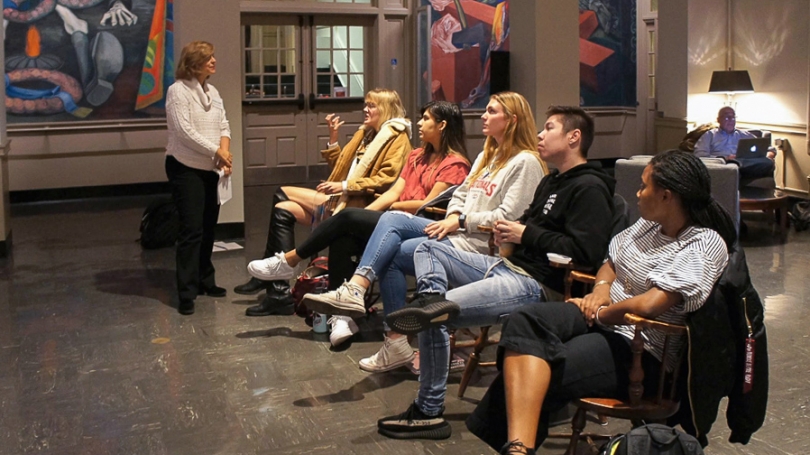In early October, this year's class of Hood interns got to participate in a Learning to Look exercise in the Orozco Mural Room downstairs in Baker Library. This teaching style is used by Hood educators with groups of local students, visitors, or Dartmouth classes who typically are not as acquainted with the process of visual analysis. We began in front of one panel of the mural and discussed what we saw. At this level of the exercise, Museum Educator Vivian Ladd asked us to not infer or jump to conclusions about the meaning of what we saw. Rather we were supposed to very literally describe what we were looking at. At times this was hard! For example, we saw skeletons with mortarboard caps and someone mentioned the death of academia, yet understanding the work at this stage would be to just state that there are skeletons painted wearing the caps graduates wear at graduation.
The next stage of Learning to Look is to begin to make inferences about what we observed and what those particular images or figures mean. The key in this stage is to not feel like you have to find the right answer. In the final stage, Vivian told us background information about Orozco and the murals that most people probably do not know when they go in to look at them. This helped answer some of the questions we had regarding whether our conclusions from the second stage were correct or not, and it gave context for some of the choices Orozco made when painting.
We then went off to different sections of the mural in groups to try the Learning to Look method on our own. Though we had already conducted the exercise, it was once again difficult to ignore our initial inferences and just focus on the formal qualities of the panel. By the time we were done, however, I realized that this method is very helpful in getting to know the work. I imagine this exercise is particularly useful and really impactful for people who would otherwise just jump to conclusions or Google information about the mural cycle.
Next time you are in the mural room, or in any museums or spaces with art, try this technique to slow yourself down and immerse yourself in the work.
Written by Jules Wheaton '19, Levinson Intern for Campus Engagement
